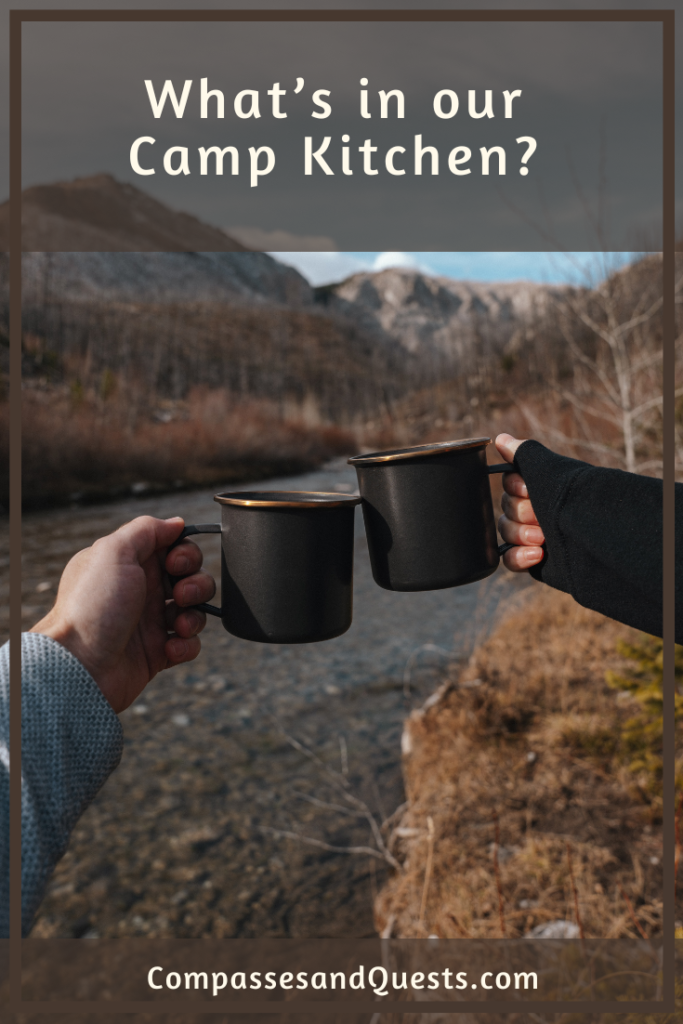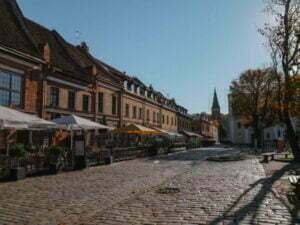We spend a lot of our time camping and love cooking dinner in the woods, picnicking by a lake, enjoying morning coffee with a view, etc. Since we cook and dine outdoors often, we thought we’d put together a list of what we keep in our camp kitchen!
We want to note that this is our list for car camping. All of this stuff definitely doesn’t come with us for backpacking, and the gear we bring into the backcountry is lighter and smaller than the gear we bring otherwise. We also want to mention that most of the gear we use isn’t typically anything fancy. There are definitely moments when it’s a good idea to invest in quality gear, but you can absolutely build out your camp kitchen collection on a budget. While there are some really innovative and great camp goods out there, you can often get the same result with a simpler alternative or a different brand.
So, with that said, let’s get into it!
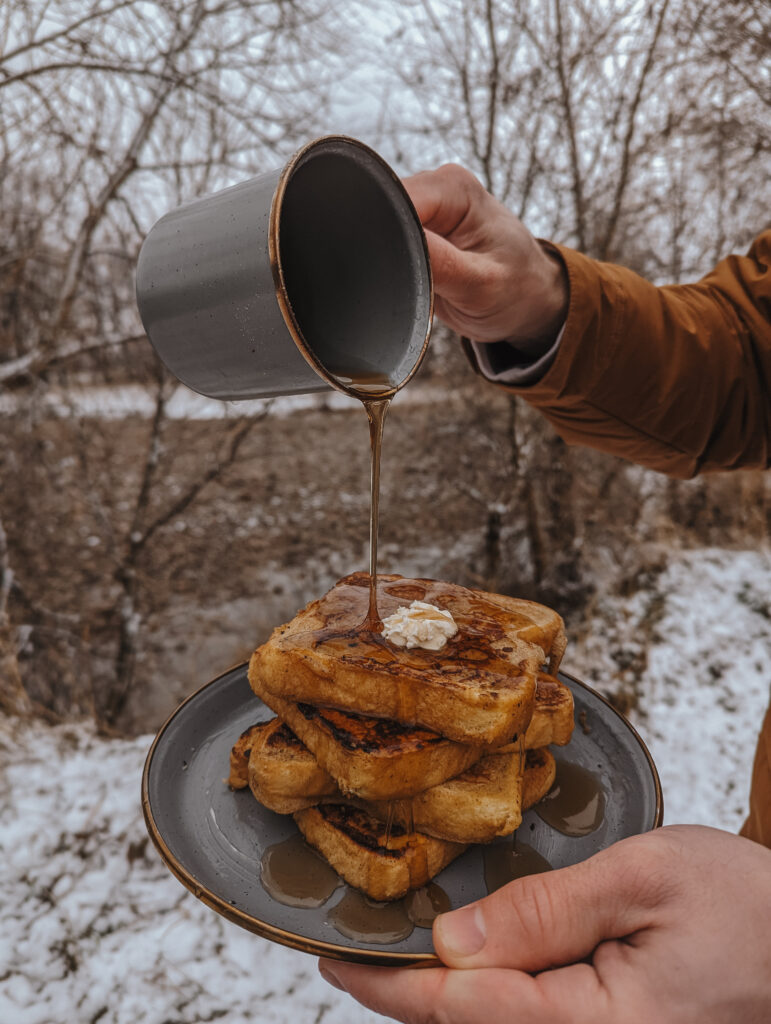
Disclaimer: This post contains affiliate links that help us keep the blog running. When used, we may earn a small commission at no additional cost to you. Learn more about our affiliates in our Terms of Service. This post also contains links to our own shop. Thank you for all the support!
1. Pots & Pans
Our camping pots and pans collection consists of a cast iron skillet and griddle, compactable pots, and some old pots and pans from college that used to be in our home kitchen. We sometimes bring a cast iron Dutch oven when we plan to cook with it as well.
Each camping trip, we at least use a skillet for cooking breakfast and a pot for boiling water for coffee.
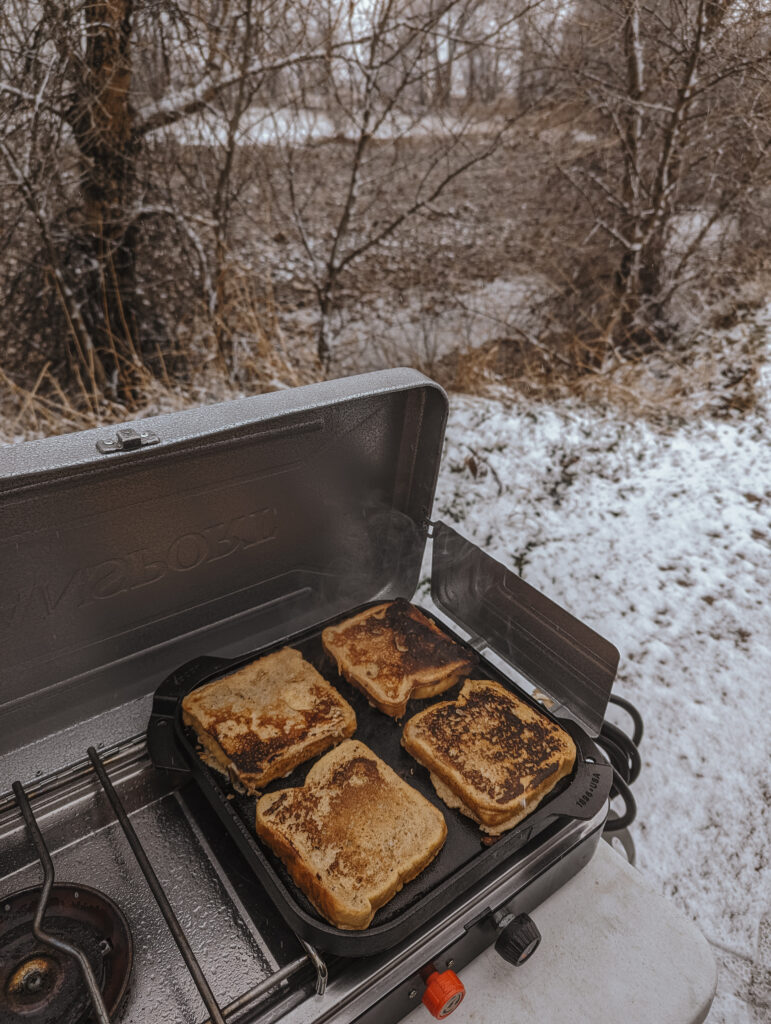
2. Cooking Utensils
We bring along a few basic cooking utensils, including a large spoon, flat spatula, and a silicon scraper.
3. Roasting Sticks
We love cooking over the fire and frequently use our roasting sticks for cooking sausages, marshmallows, campfire churros, and more. We prefer the ones that have the ability to extend so you can sit back and relax while holding your stick over the fire. They are also easy to store when they are collapsed.
The roasting sticks we own were a gift, but you can find these anywhere from Walmart and Amazon to Scheels and REI.
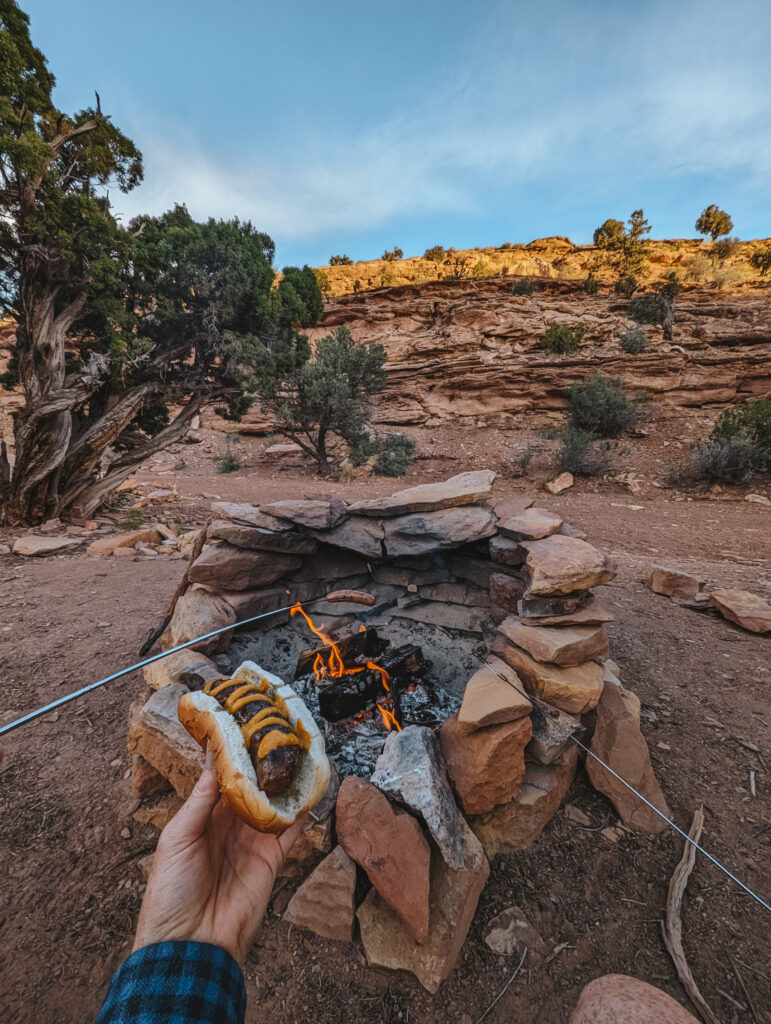
4. Fire Mitt
Fire mitts are useful to protect your hands when tending to the fire and handling hot cast iron. We use these fire gloves, but there are other similar options, such as leather or silicone pan handle covers.
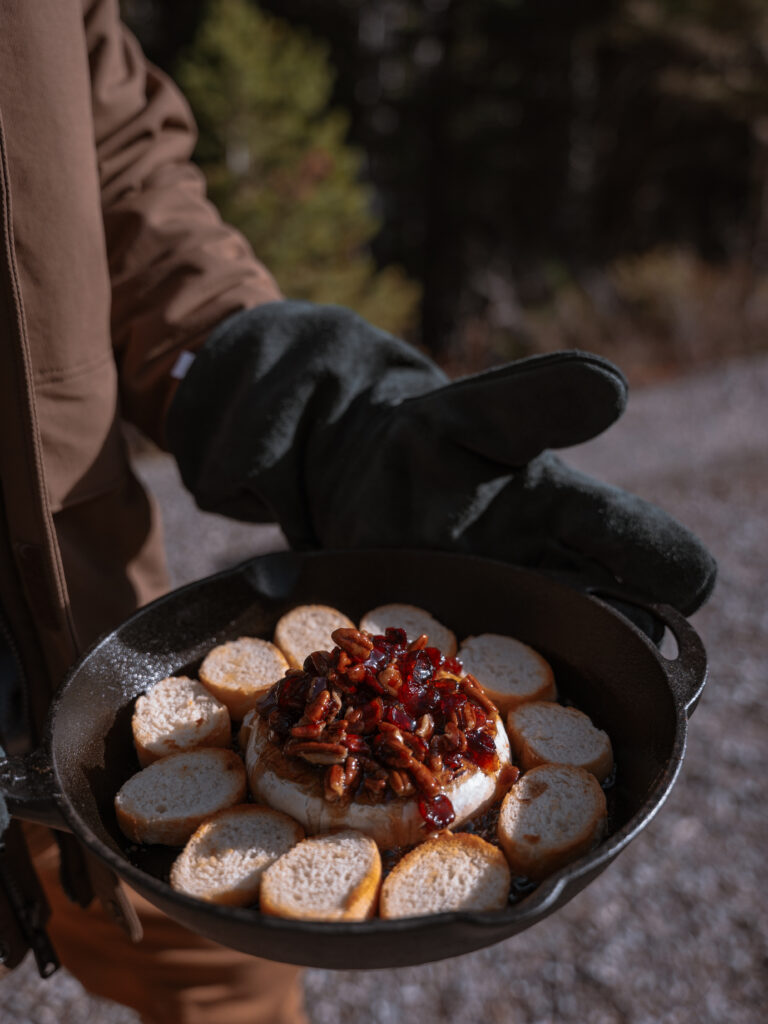
5. Lighter/Matches
You can always find a lighter and matches in our camp kitchen box to light a camp fire or our stove if the ignitor ever stops working.
6. Camp Stove
For car camping, we have a simple Stansport two-burner stove similar to this one. There are many nicer and more highly-rated stoves on the market, but we got this one almost 10 years ago back in college and it has been going strong ever since!
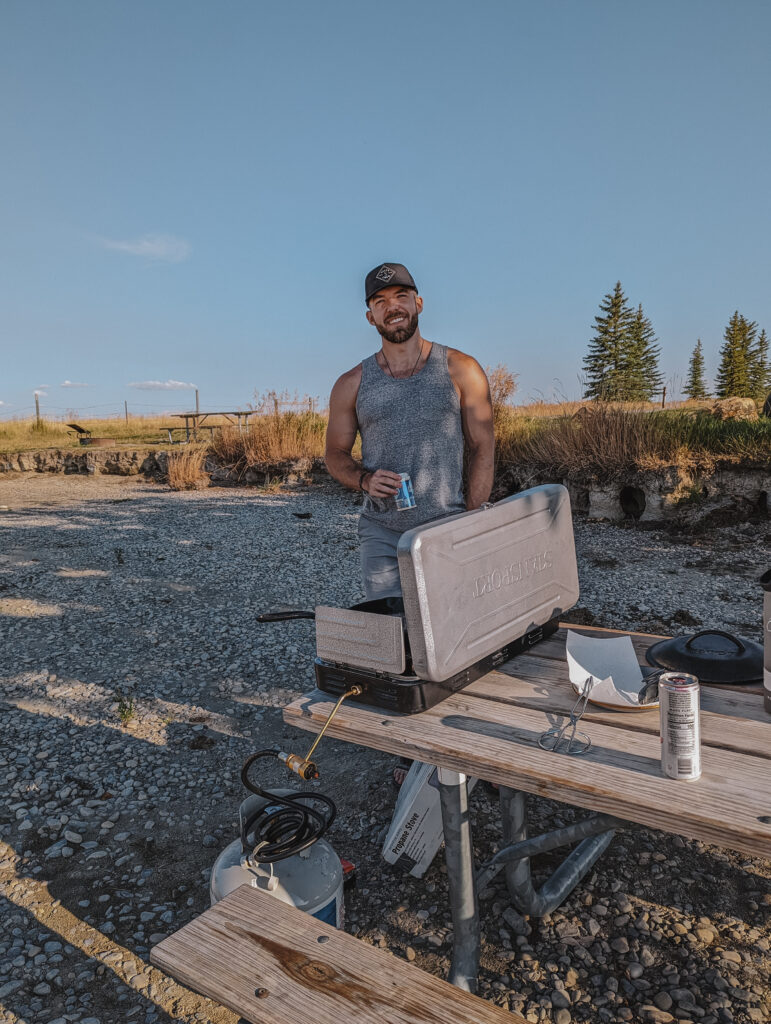
7. Fuel
Our stove uses propane. We usually bring a full-size tank because they are more cost effective than the small canisters and we camp often. But we keep smaller canisters on hand just in case we need a backup or if we don’t feel like throwing the big tank in the car.
If you plan to use a big tank, you may need an additional hose and adaptor to use it with your camp stove.
8. Mugs & Cups
Our camp kitchen box contains a random assortment of reusable branded plastic cups we collected through college. We use these primarily for making cocktails. We also frequently make cocktails in a stainless steel insulated wine tumbler when we want to keep our drinks extra cold. The lids are also nice for keeping bugs out. We think the ones we have are from Costco, but you can find similar options elsewhere, like these from Yeti and Camelbak.
For coffee, we generally use enamel mugs. But during colder times of year, we’ll put our coffee in a Thermos to keep it warmer for longer.
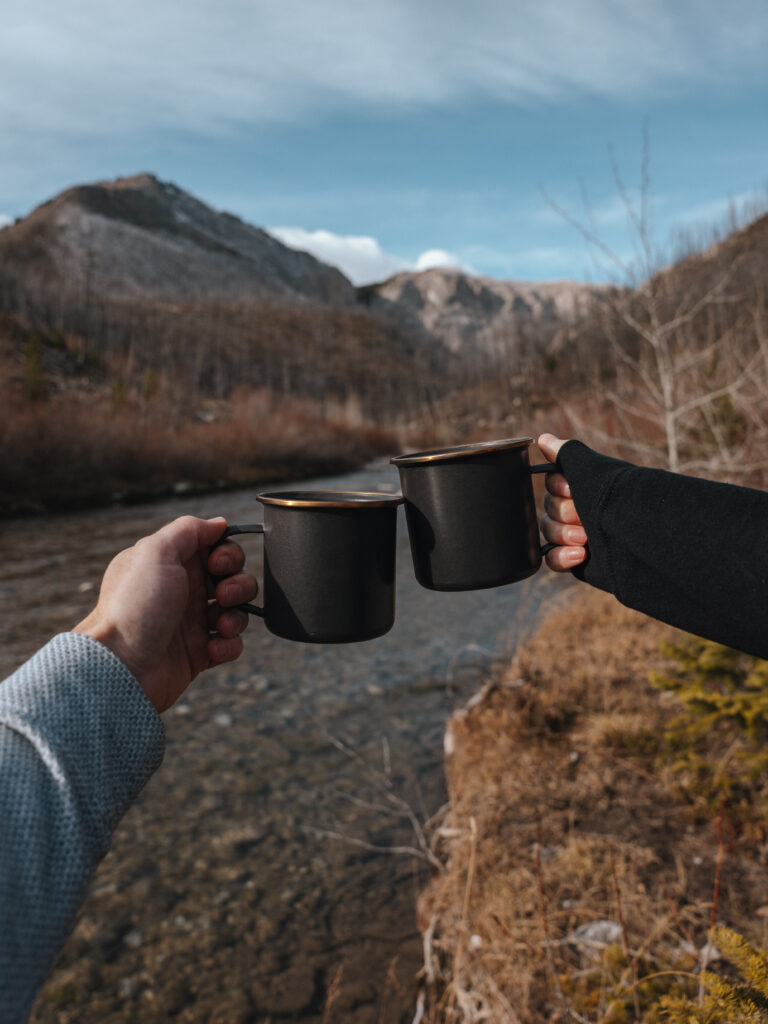
9. Plates & Bowls
We almost always use reusable dishware, like these enamel plates and bowls or some basic plastic plates we grabbed from Walmart. But we also keep some paper plates and bowls in the box for the occasional use as well.
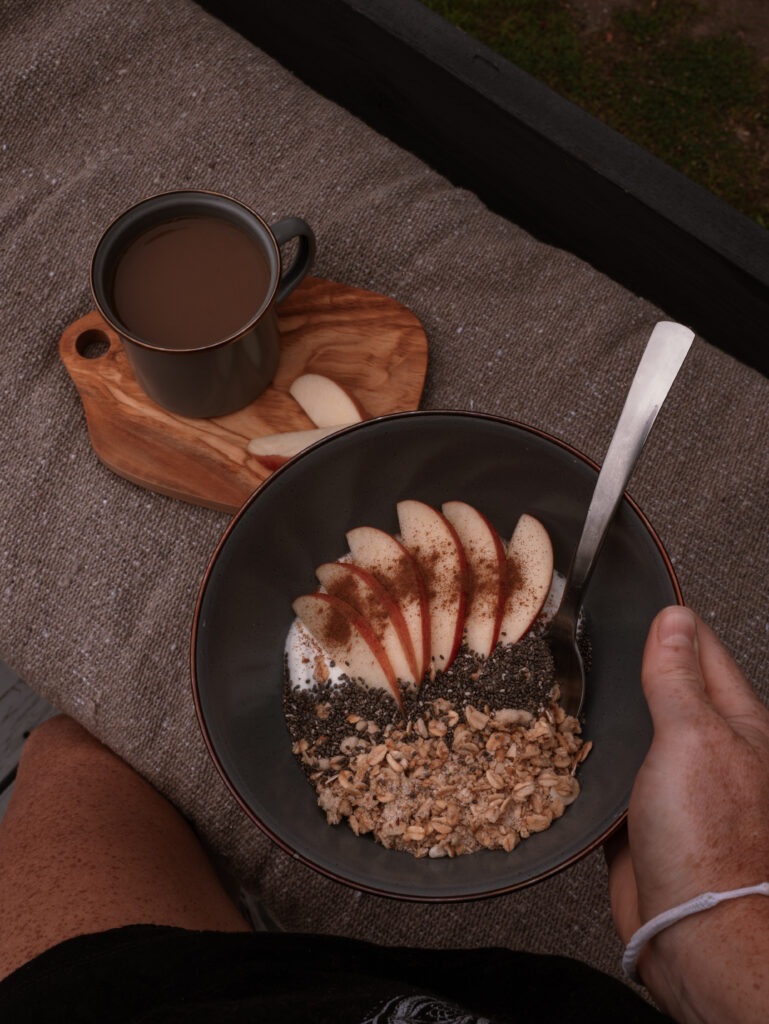

10. Utensils
For utensils, we also opt for reusable options, which are just basic metal spoons and forks. But we also keep some disposable plastic ones on hand too.
11. Coffee Maker
There are various methods people use to make coffee outdoors, such as percolators, espresso makers, and pour-over coffee sets. We just use a basic French press.
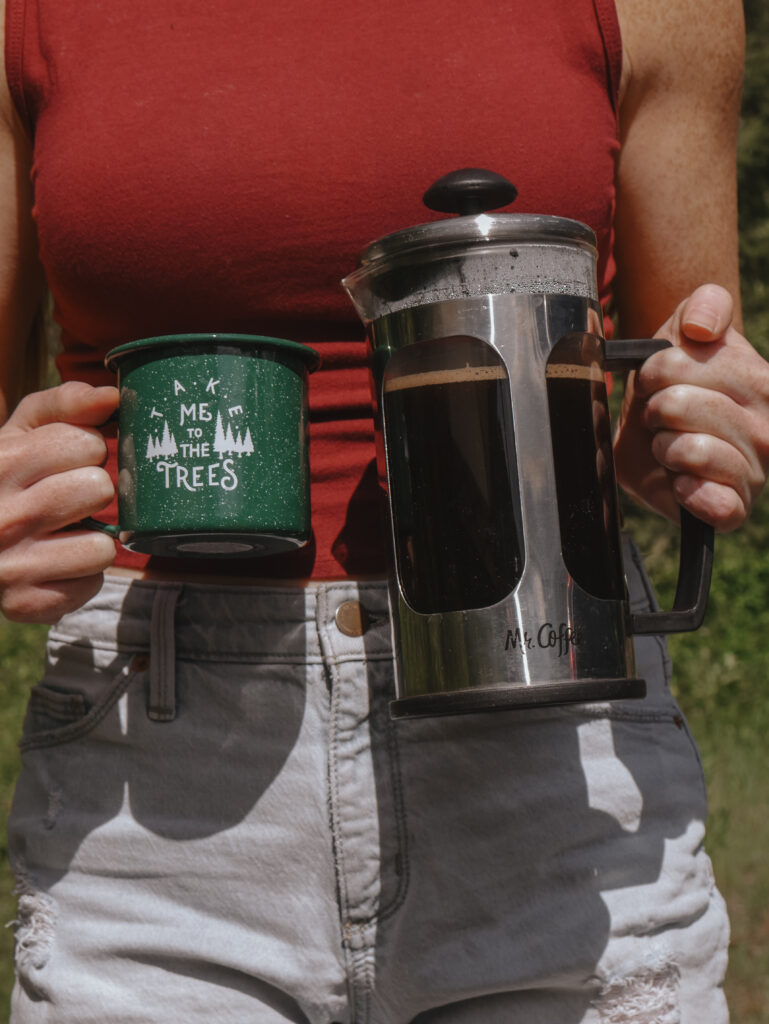
12. Cutting Board & Knife
We always have a small cutting board and sharp knife that can be folded or sheathed.
13. Cleaning Kit
For cleaning up, we keep a sealable bag with a simple steel scrubber and biodegradable camp soap, such as Wilderness Wash or Campsuds.
We generally don’t have a ton of dishes, but some people bring a “packable sink” or simple plastic bin to more easily soak and rinse dishes when camping.
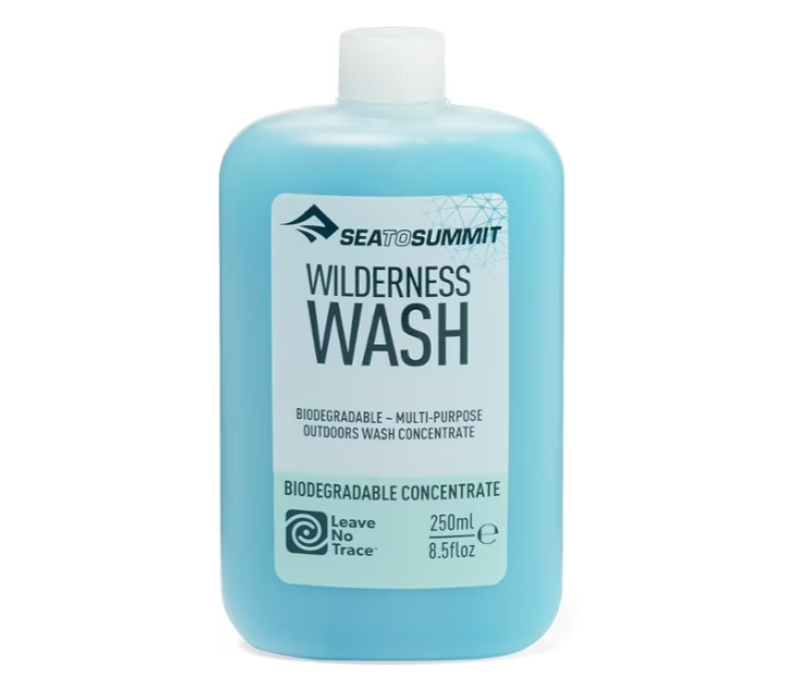
14. Hand Sanitizer
Make sure it’s hand sanitizer that actually kills a lot of bacteria, not the weaker stuff (from Bath & Body Works for example) that might smell good but isn’t as effective.
15. Paper Towels
Paper towels are useful for cleanups, drying dishes and other items, and as a napkin or plate. We just keep a roll in the box and replace as needed.
16. Trash Bags
Always keep the wilderness clean, pack out any trash, and dispose of your trash properly please!
17. Misc. Items
There are other items we may not use as frequently, but throw in the camp kitchen box when we plan to cook something that requires them. Some of these include a small strainer for pasta and a can opener.
On longer camping trips, we’ll often throw some snack bags, rubber bands, and chip clips in the camp kitchen box for any snacks we might open.
When we make eggs, we also have a camp egg carton to pack eggs in. Not necessary, but helpful to prevent cracked eggs since the sides are sturdier than the typical carton they’re sold in.

The Camp Kitchen Box
To keep all of our camp kitchen stuff organized, we put the above listed items (except the big ol’ Dutch oven) in a medium-sized plastic storage container with a snap lid. These are easy to pack around, are sturdy, and can be easily washed.
Any other gear you think we should add? Let us know in the comments below!
For other packing lists, check out our Guides Page.
Like this Post? Pin it!
